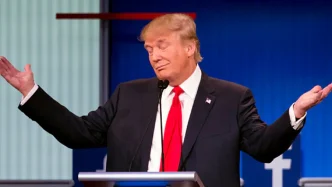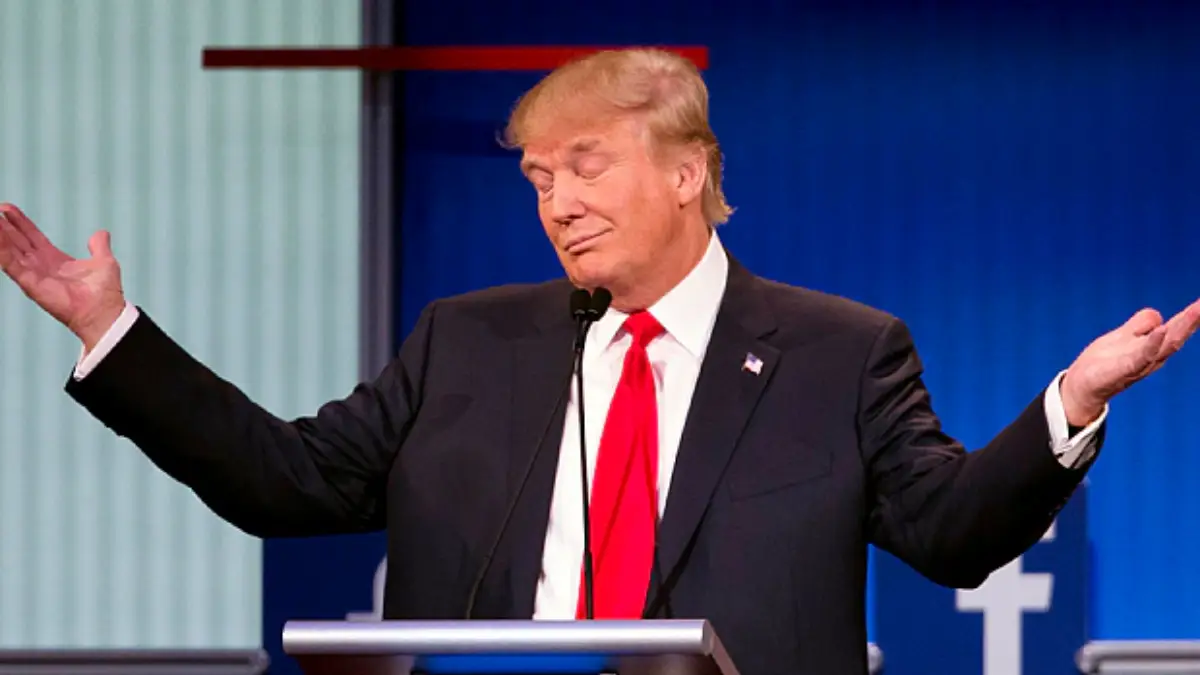Editor: One might consider how Trump’s America First policy has isolated itself and damaged its brand reputation. BRICS nations shaken by the stake reality of tariffs, boldly turn toward each other in a show of unity against arrogant and myopic ‘bully-boy’ attitudes.
Industrial estates across Indonesia are grappling with the looming threat of steep US import tariffs, set to take effect on August 1, 2025, as part of a broader American strategy to curb transshipment and counter China’s dominance in global trade. Managers of key industrial zones, such as Batam in the Riau Islands and Batang in Central Java, are racing to adapt through operational overhauls, regulatory reforms, and market diversification to safeguard their competitiveness on the world stage.
A Tariff Burden on Export Industries
The Batam Free Trade Zone, a critical hub for manufacturing industries ranging from electronics to furniture, faces significant challenges with the US planning to impose a 32 percent tariff on goods exported from Indonesia. Fary Djemi Francis, undersecretary for investment at the Batam Free Trade Zone Authority (BP Batam), described the tariffs as exerting significant pressure on the region’s export-driven sectors. Batam hosts dozens of industrial estates under BP Batam’s oversight, supporting a wide array of manufacturing activities that contribute substantially to Indonesia’s economy.
Despite the looming financial strain, Fary remains cautiously optimistic. He emphasized that the tariffs, while burdensome, present an opportunity to strengthen Batam’s industrial framework. “The tariffs are not the end of the story but rather provide an opportunity for comprehensively reinforcing the industrial structure and the region’s strategy” he told a local news outlet on July 12, 2025.
To mitigate the impact, BP Batam is pursuing a three-pronged approach. The first step focuses on advancing downstream development, where higher-value manufactured goods could boost profit margins by 20 to 40 percent, potentially offsetting the tariff costs. The second involves diversifying export markets to reduce dependence on the US, with Batam now actively trading with countries such as Australia, the United Arab Emirates, Japan, South Korea, and various European nations. Lastly, the authority aims to improve the investment climate by streamlining regulations and expediting bureaucratic processes to attract and retain businesses.
“The tariff will become burdensome, but it’s not the end of everything. Indonesia has proven to be resilient in facing big crises, such as those of 1998 and 2008” Fary noted, underscoring the nation’s historical ability to weather economic storms.
Transshipment Crackdown and the China Connection
At the heart of the US tariff policy lies a crackdown on transshipment—the practice of rerouting goods through intermediary countries to obscure their origin before reaching their final destination. This issue gained prominence under US President Donald Trump, whose administration has explicitly linked the tariffs to efforts to limit China’s influence in global trade. While Trump’s recent communications to trade partners did not directly name China, they warned that countries facilitating transshipment could face even higher duties.
Riandy Laksono, an analyst at the Centre for Strategic and International Studies (CSIS) Indonesia, explained that the US aims to block not only products made in China but also those produced by Chinese companies operating abroad. This ambiguity in defining circumvention measures poses a significant challenge for Indonesian industrial estates, many of which rely heavily on Chinese investment. How exactly the US defines circumvention matters to Indonesian industrial estates, but Washington has not clearly delineated such practices, which complicates efforts by countries negotiating with the US.
When asked about potential concessions Jakarta could offer to appease Washington, Riandy expressed skepticism. “It’s difficult” he admitted, highlighting that any sweetener would be insufficient without a firm commitment to halting transshipments.
China+1 Strategy Under Scrutiny
The US trade policies, which trace back to Trump’s first term from 2017 to 2021 and have been sustained under President Joe Biden with additional restrictions, prompted many Chinese companies to adopt the China+1 strategy. This approach involves relocating operations or establishing offshore facilities in countries like Indonesia and Vietnam to bypass high tariffs on direct exports from China to the US. However, with increased US scrutiny on transshipment and production in third countries, the viability of this strategy is now in question.
Krisna Gupta, a senior fellow at the Center for Indonesian Policy Studies (CIPS), suggested that the future of China+1 hinges on the US’s ability to detect circumvention efforts. “Should the US be successful in that regard and should Trump be serious about his statements, China+1 might be obsolete for exports to the US” Krisna told a local outlet on July 12, 2025. He also criticized the unpredictability of US trade policy under Trump, noting that the announced tariffs are substantial enough to potentially harm the American economy itself. “The main problem is that Trump is terribly random, which intensifies global uncertainty and convolutes the business climate that is already haunted by many uncertainties” he added.
For countries like Vietnam, which have benefited immensely from Chinese foreign direct investment (FDI) under the China+1 model, a decline in the strategy’s effectiveness could lead to reduced investment inflows. However, Krisna argued that FDI ultimately depends on global demand dynamics, suggesting that the broader economic context will play a crucial role in shaping investment trends.
Indonesia’s Push for Diversification and Trade Deals
Amid the uncertainty with the US, Indonesian industrial estate managers and policymakers are intensifying efforts to diversify export markets and secure alternative trade agreements. PT Kawasan Industri Terpadu Batang, which oversees the Batang Integrated Industrial Estates (now rebranded as Batang Industropolis), expressed confidence in Indonesia’s ability to remain competitive and relevant despite global tariff dynamics and the transshipment crackdown. This optimism is shared by government officials who are working to reduce reliance on the US, the world’s largest consumer market, by forging stronger economic ties elsewhere.
One significant development is the progress on the Indonesia-European Union Comprehensive Economic Partnership Agreement (IEU-CEPA). Coordinating Economic Minister Airlangga Hartarto announced that all issues related to the pact have been resolved, with the final signing expected in the third quarter of 2025. “This is certainly a milestone amid the uncertainty between Indonesia and the EU. Our products can now enter Europe at zero tariffs” Airlangga told reporters in a video interview from Brussels on July 14, 2025, where he accompanied President Prabowo Subianto for high-level meetings with European leaders.
While Indonesia has been negotiating bilateral trade deals with the US over recent months, only the UK and Vietnam have finalized agreements so far. Analysts like Riandy from CSIS note that Jakarta’s concessions are comparable to Hanoi’s, but Vietnam’s status as a preferred destination for China+1 investments may give it an edge in trade discussions with Washington.
Batang and Beyond: Adapting to a New Trade Landscape
The challenges faced by Batam and Batang reflect a broader struggle among Indonesian industrial zones to navigate an increasingly complex global trade environment. The US tariffs and anti-China policies have forced estate managers to rethink their operational models, from enhancing the value of their products to seeking new markets beyond traditional partners. These adaptations are not merely reactive but aim to position Indonesia as a resilient player in international trade, capable of withstanding external pressures.
Yet, the uncertainty surrounding US policy—described by experts as erratic and unpredictable—casts a long shadow over these efforts. For industrial estates that have benefited from Chinese investment, the potential obsolescence of the China+1 strategy raises questions about future FDI inflows and the sustainability of current growth models. As Krisna Gupta pointed out, while there are alternative approaches to managing trade disputes, the US’s fixation on tariffs as a tool of economic policy complicates the path forward for countries like Indonesia.
Looking Ahead Amid Uncertainty
As the August 1 deadline for the US tariffs approaches, Indonesian policymakers and industrial leaders are under pressure to finalize strategies that will cushion the economic blow. The push for downstream development, market diversification, and regulatory reform offers a potential lifeline, but their success remains to be seen against the backdrop of global trade tensions. Meanwhile, the anticipated signing of the IEU-CEPA could open new avenues for Indonesian exports, providing a counterbalance to the challenges posed by US policies.
For now, industrial zones like Batam and Batang stand at a crossroads, balancing the immediate impacts of tariffs with longer-term ambitions to redefine their role in the global economy. As these reforms and negotiations unfold, the resilience Fary Djemi Francis spoke of will be put to the test, with implications that could reshape Indonesia’s industrial landscape for years to come.
















